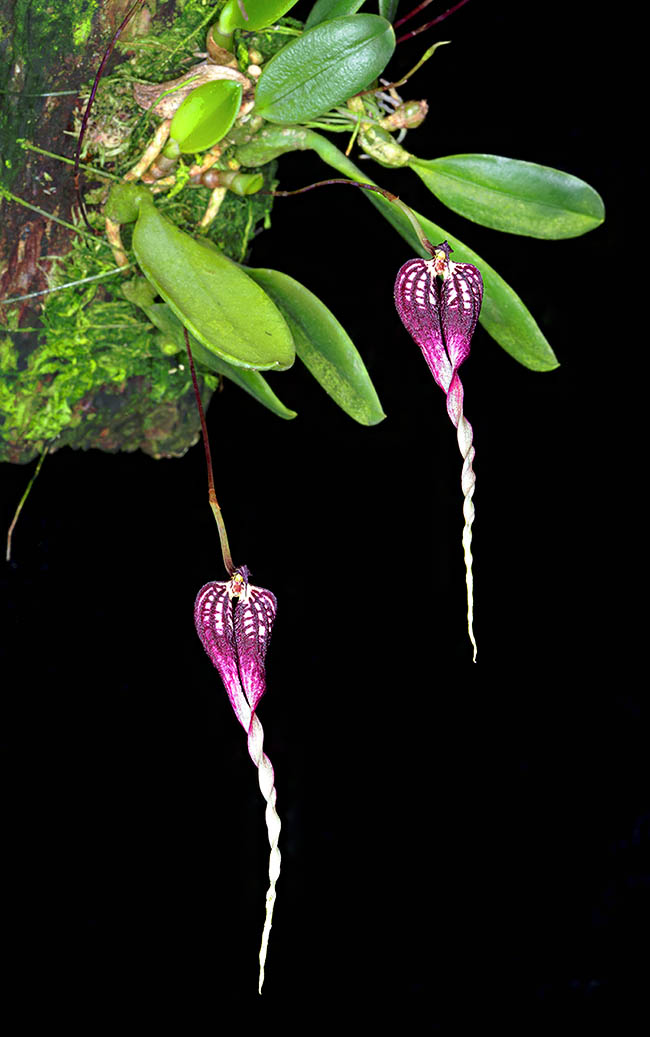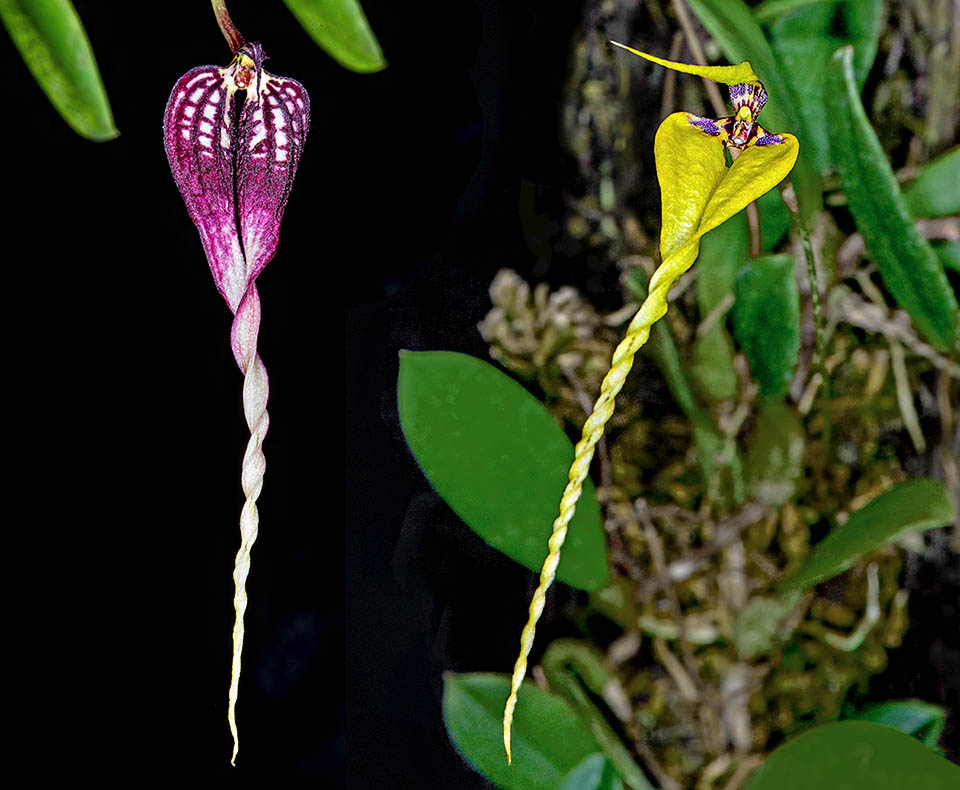Family : Orchidaceae

Text © Prof. Pietro Pavone

English translation by Mario Beltramini

Bulbophyllum contortisepalum is a small epiphyte, endangered in nature, that grows in the misty forests of New Guinea, Solomon Islands, Vanuatu and of the Bismarck Archipelago between 50 and about 800 m of altitude © Giuseppe Mazza
Bulbophyllum contortisepalum J.J.Sm. (1912) is a species of the family Orchidaceae, recently included in the tribe Malaxideae, subtribe Dendrobiinae.
It is endemic to New Guinea, Solomon Islands, Vanuatu and Bismarck Archipelago, where it grows in the misty forests, between 50 and 800 (1000) metres of altitude, on trunks and branches having no moss as epiphyte.
The name of the genus Bulbophyllum comes from the Greek “bolbos” meaning ‘bulb’ and “phyllon”, leaf, referring to the pseudobulbs where the leaf grows. The specific epithet refers to the long twisted together lateral sepals.
Known as “Bulbophyllum with twisted sepals”, it is a commercially protected species because in danger of extinction in nature and as such inserted in the Appendix II of the Washington Convention (CITES) that is meant to protect the animal and vegetable species under risk of extinction, by preventing their export and possession.
It has a creeping, roundish, of 0,23 cm of diametre, and spaced pseudobulbs, of more or less quadrangular globose shape, fleshy, 0,9 cm long, from where originate the roots and only one leaf.
The leaf, of about 4,6 x 1,9 cm, is thick, rigid and has an elliptical shape.
The pseudobulbs and the leaves are of dark green colour.
The inflorescence has an about 13 cm long filiform stem with small scales at the base, and originates from a node of the rhizome and forms only one flower with subparallel sepals of a bright yellow colour with red streaks. The median sepal is lanceolate, gradually pointed. The lateral sepals are ovate-lanceolate, slightly falcate, twisted, about 8 cm long.
The petals are very small, close to the column.
The brownish violet labium is mobile, very small, often tongue-shaped, curved, and with the basal part having narrow margins, membranous, ciliate and with concave sides. The 0,18 cm long column (gynostemium) is thick, dorsally convex, long, quadrangular, narrowed to the apex. The anther is cucullated (hood-shaped). The foot of the column forms an obtuse angle with the ovary that is pedicellate, 6-grooved, and measures about 2,2 cm.
Bulbophyllum contortisepalum is a species to be cultivated in shady conditions, with an at least 10 hours lasting photoperiod per day. In the places of origin, all over the year, the mean daytime temperature is 29-32 °C (84-90 °F), the night one of 19-21 °C (66-70 °F), with a daily difference of 9-12 °C (16-22 °F). Therefore, it requires a “temperate or intermediate” or “warm” greenhouse. As it lives as an epiphyte on trunks or branches, usually having no moss, it is better to grow it on arboreal ferns or on cork. Moreover, it requires a humidity of 75-80% but does not like water stagnation. Hence, it is good practice to allow it to dry up slightly between waterings.

Left, the characteristic flower of the form Bulbophyllum contortisepalum ‘Red’ (© Giuseppe Mazza) and, right, Bulbophyllum contortisepalum ‘Yellow’ (© Eerika Schulz)
In winter the water intake should be reduced. It can grow bare-rooted on a humid plate. The fertilization is useful but halving the dose used for the orchids. Blooming occurs almost all year round and the flower lasts about 3 days but does not emit any scent.
Within the species the colour of the flower may change. Thus we have different forms: Bulbophyllum contortisepalum ‘Red’ with dark red flowers, Bulbophyllum contortisepalum ‘Yellow’ with yellow flowers, Bulbophyllum contortisepalum ‘White’ with white flowers.
In the past, this species was synonymized with Bulbophyllum falciferum J.J. Sm. (1910), but it differs from it due to the length and the shape of the dorsal sepal and the apex of the petals. The long petals, hanging and twisted at the base, are similar in both species.
Synonyms: Bulbophyllum streptosepalum Schltr.
